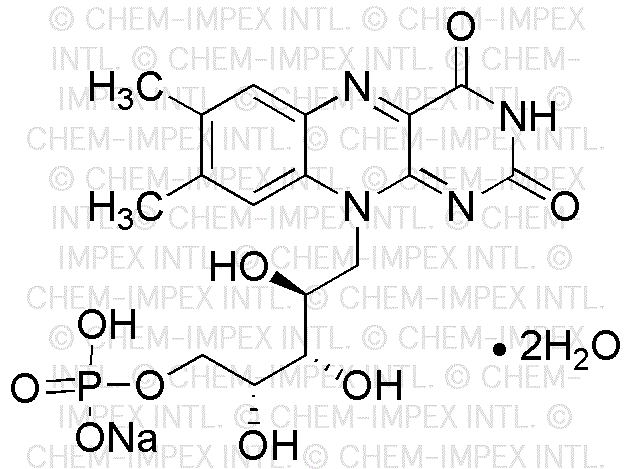Riboflavin-5'-phosphate sodium salt dihydrate is widely utilized in research focused on:
- Nutrition and Dietary Supplements: This compound serves as a vital ingredient in multivitamin formulations, enhancing energy metabolism and supporting overall health.
- Pharmaceuticals: It is used in the development of medications aimed at treating riboflavin deficiency, which can lead to various health issues, including skin disorders and anemia.
- Cosmetics: The compound is incorporated into skincare products for its antioxidant properties, helping to protect skin cells from oxidative stress and promoting a healthy complexion.
- Cell Culture Media: In laboratory settings, it is added to cell culture media to support the growth of cells, particularly in studies related to metabolism and cellular functions.
- Food Industry: It acts as a food additive, enhancing the nutritional profile of food products and providing a natural source of vitamin B2, which is essential for various bodily functions.
General Information
Properties
Safety and Regulations
Applications
Riboflavin-5'-phosphate sodium salt dihydrate is widely utilized in research focused on:
- Nutrition and Dietary Supplements: This compound serves as a vital ingredient in multivitamin formulations, enhancing energy metabolism and supporting overall health.
- Pharmaceuticals: It is used in the development of medications aimed at treating riboflavin deficiency, which can lead to various health issues, including skin disorders and anemia.
- Cosmetics: The compound is incorporated into skincare products for its antioxidant properties, helping to protect skin cells from oxidative stress and promoting a healthy complexion.
- Cell Culture Media: In laboratory settings, it is added to cell culture media to support the growth of cells, particularly in studies related to metabolism and cellular functions.
- Food Industry: It acts as a food additive, enhancing the nutritional profile of food products and providing a natural source of vitamin B2, which is essential for various bodily functions.
Documents
Safety Data Sheets (SDS)
The SDS provides comprehensive safety information on handling, storage, and disposal of the product.
Product Specification (PS)
The PS provides a comprehensive breakdown of the product’s properties, including chemical composition, physical state, purity, and storage requirements. It also details acceptable quality ranges and the product's intended applications.
Certificates of Analysis (COA)
Search for Certificates of Analysis (COA) by entering the products Lot Number. Lot and Batch Numbers can be found on a product’s label following the words ‘Lot’ or ‘Batch’.
*Catalog Number
*Lot Number
Certificates Of Origin (COO)
This COO confirms the country where the product was manufactured, and also details the materials and components used in it and whether it is derived from natural, synthetic, or other specific sources. This certificate may be required for customs, trade, and regulatory compliance.
*Catalog Number
*Lot Number
Safety Data Sheets (SDS)
The SDS provides comprehensive safety information on handling, storage, and disposal of the product.
DownloadProduct Specification (PS)
The PS provides a comprehensive breakdown of the product’s properties, including chemical composition, physical state, purity, and storage requirements. It also details acceptable quality ranges and the product's intended applications.
DownloadCertificates of Analysis (COA)
Search for Certificates of Analysis (COA) by entering the products Lot Number. Lot and Batch Numbers can be found on a product’s label following the words ‘Lot’ or ‘Batch’.
*Catalog Number
*Lot Number
Certificates Of Origin (COO)
This COO confirms the country where the product was manufactured, and also details the materials and components used in it and whether it is derived from natural, synthetic, or other specific sources. This certificate may be required for customs, trade, and regulatory compliance.


